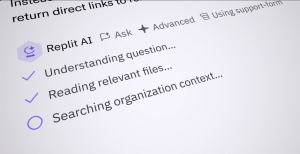Breaking down IBM’s 4 pillars of Big Data : Analytics, social, cloud + mobile
![]() There are four Pillars to IBM’s recently revamped Big Data Analytics portfolio, comprised of Analytics, Social Data, Cloud, and Mobile. That isn’t saying much, because that is undoubtedly the four pillars of all major technology companies when it comes to Big Data. However, by segmenting and focusing resources on specific “pillars” individually, IBM is attacking Big Data from four different angles with converged objectives. In essence, this is how IBM hopes to actionize and monetize the hype behind Big Data dreams, delivering on the expectations surrounding business intelligence methods, internal analytics, marketing and an overall effort to operate more efficiently within an organization. We heard from IBM, its partners and customers at the recently concluded IOD event on this very topic, and have put together a collection of top interviews from theCUBE.
There are four Pillars to IBM’s recently revamped Big Data Analytics portfolio, comprised of Analytics, Social Data, Cloud, and Mobile. That isn’t saying much, because that is undoubtedly the four pillars of all major technology companies when it comes to Big Data. However, by segmenting and focusing resources on specific “pillars” individually, IBM is attacking Big Data from four different angles with converged objectives. In essence, this is how IBM hopes to actionize and monetize the hype behind Big Data dreams, delivering on the expectations surrounding business intelligence methods, internal analytics, marketing and an overall effort to operate more efficiently within an organization. We heard from IBM, its partners and customers at the recently concluded IOD event on this very topic, and have put together a collection of top interviews from theCUBE.
Analytics, the backbone of all four pillars
.
How can business intelligence vendors like IBM make it easier for users (businesses) to consume data? Rapid action insight, or real-time data manipulation is something IBM acknowledges is a must. “Analytics for all” is a phrase used. Here is the crux of the analytics issue – general three-step lifecycle. That life cycle goes something like this: multiple data models from multiple data sources > the “question” the user has isn’t answered > IT has to further change models and by time they get to the user the data is outdated.
Les Rechan, General Manager and Business Analytics with IBM joined us on theCUBE at IBM Information on Demand 2013 event in Las Vegas this past November and discussed how IBM is tackling Big Data insights.
“Take the capability that we got (all data, all analytics, all solutions) and apply it. When you think about analytics (social, mobile, cloud), we’re looking at systems of engagement, presenting information to people on the front line that could come from many heterogeneous data sources. We want to be able to bring that together – and we have solutions that do that – and then bring it together for that user and for that particular problem.”
You can watch his full interview below:
.
Social Data: we want more
.
Services matter because it’s great gross profit for helping customers implement solutions that they asked for. The market is exploding with demand, people know it’s a game changer with Big Data analytics, cloud, and mobile devices. People want to be in every channel of the social business. Social data is addictive to businesses, because it gives direct-to-consumer access on their playing field with immediate possibilities of admiration and sales. Think about that for a second. You could sell a tractor on a Facebook page, or sell your company from a tweet. Those facts might be extreme, but they are still facts.
Fred Balboni, Global Lead for Business Analytics and Optimization with IBM shined some light on how IBM sees social data in a recent interview on theCUBE. “Clients think in terms of processes, not data,” he said. “The first part of services is being able to articulate the value of analytics and Big Data to a client in the businesses terms – it becomes a boardroom conversation, quickly populated with use cases.”
And a blind spot emerges. Clients don’t think in terms of Big Data or analyzing what that data means. They are more focused on business processes. IBM believes that although social data is vital to the success of businesses utilizing the full breadth of what Big Data offers to them, the first step is creating conversations where the data speaks in process terms, not data terms.
You can watch Balboni’s full interview below:
.
Another good video on Social Data from #IBMIoD is Darrin Nelson, VP of Solution Sales with Sirius Computer Solutions, among the largest IBM resellers in the world, discussing how businesses are layering social atop business objectives. Watch below:
.
.
Cloud. It’s where everything is going
.
What better way to control the cloud than getting patents, right? Big Blue gobbled up a record 6,478 patents in 2012 and when the 2013 numbers are calculated, we’re sure it’ll be their 21st straight year that it racked up more innovations than any other company. IBM is just as keen on gaining a Big Data foothold in the cloud.
With the Internet of Things driving exponential growth in data volumes, organizations are under increased pressure to look beyond the firewall for new revenue streams and business value. IBM’s patent could significantly simplify this task by accelerating and reducing the overhead associated with collecting social media interactions, sensory data and other information from outside sources. Lehman’s terms: IBM makes it easier for businesses to collect social, mobile and inbound data gathered from anywhere on the web.
Has the “building a smarter planet” tagline ever made anymore sense? 50 billion ‘things’ will be connected to the Internet in six years. That is billion, with a capital, bolded and underlined “B“. The market value of analyzing that data is nowhere close to being defined yet, but I would not be surprised of that market cap ends up being in the trillions.
Mobile, smartphones and tablets are defining the future of data
.
![]() The explosive growth in mobile data traffic contributed to a 16.5 percent increase in overall Christmas Day sales in 2013, IBM has found, with smartphones and tablets accounting for nearly half of all e-commerce activity. Nearly 29 percent of online sales came from mobile devices, representing a massive 40 percent increase compared to last year, according to Big Blue’s report. “Shoppers referred from Facebook averaged $72.01 per order, versus Pinterest referrals, which drove $86.83 per order. However, Facebook referrals converted sales at nearly four times the rate of Pinterest referrals, perhaps indicating stronger confidence in network recommendations,” IBM said.
The explosive growth in mobile data traffic contributed to a 16.5 percent increase in overall Christmas Day sales in 2013, IBM has found, with smartphones and tablets accounting for nearly half of all e-commerce activity. Nearly 29 percent of online sales came from mobile devices, representing a massive 40 percent increase compared to last year, according to Big Blue’s report. “Shoppers referred from Facebook averaged $72.01 per order, versus Pinterest referrals, which drove $86.83 per order. However, Facebook referrals converted sales at nearly four times the rate of Pinterest referrals, perhaps indicating stronger confidence in network recommendations,” IBM said.
IBM is hedging a lot of bets on mobile data following the shift which occurred a decade ago on the Internet, when businesses natively embraced the Web. Business are natively embracing mobile now, and IBM expects mainframe clients to adopt this trend by deploying more mobile workloads in 2014. IBM is feverishly trying to build the infrastructure so that businesses can serve a mobile-driven consumer world.
If there is one thing to watch for from IBM in 2014 as it pertains to Big Data, it’s where Big Blue either builds-out or acquires in the mobile data arena. The Internet of Things is in our living rooms and is on 24-7. Capturing, analyzing and protecting consumer data is more than just a trend in 2014, it is the industrial revolution in digital form.
image credit
A message from John Furrier, co-founder of SiliconANGLE:
Your vote of support is important to us and it helps us keep the content FREE.
One click below supports our mission to provide free, deep, and relevant content.
Join our community on YouTube
Join the community that includes more than 15,000 #CubeAlumni experts, including Amazon.com CEO Andy Jassy, Dell Technologies founder and CEO Michael Dell, Intel CEO Pat Gelsinger, and many more luminaries and experts.
THANK YOU









